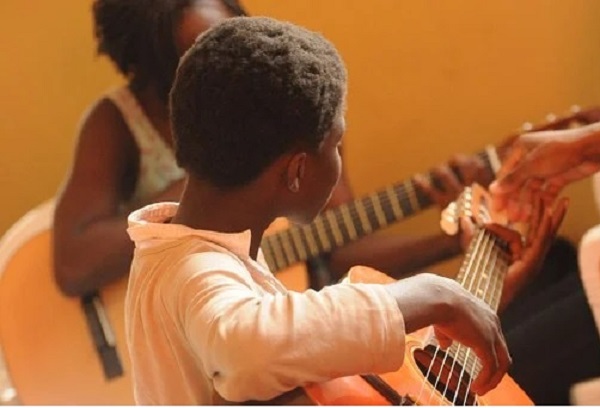The Benefits of Music on a Child’s Growth and Development

Under normal circumstances, children’s schedules are packed with sports, scouting, and other extra-curricular activities that require them to be outside or go somewhere. Since we’re in a pandemic now, with no clear end in sight, parents are left with bored children at home who keep complaining about not having enough to do.
One of the best ways to keep children occupied is getting them involved in music classes. Having them take up voice or guitar lessons isn’t just a way to get rid of their boredom. In fact, music is very beneficial to a child’s growth and development.
Why Kids Should Get into Music
- It helps in brain development.
According to several studies, developing an understanding and appreciation for musical language is beneficial to a child’s overall mental development. Getting involved with music physically develops the left side of a person’s brain, which is important in reasoning and processing language.
- It helps develop and fine-tune their motor skills.
Playing with musical instruments requires greater control over one’s fine motor skills as it typically involves body coordination. From plucking on guitar strings to playing the keys on a piano or working with hands and feet on a drum set, learning music helps develop and improve a child’s motor skills.
- It’s a great way to express oneself.
Self-expression is often brushed aside and regarded as being overrated. But the ability to express oneself helps lessen the risk of a person suffering from mental health issues. This lets children creatively voice their thoughts and emotions in a productive manner instead of keeping it bottled up inside.
- It helps with academics.
Music’s beats, rhythm, scales, and measures help condition a child’s brains for math as it teaches them to divide, recognize patterns, and create fractions.
- It improves social skills.
Whether it’s belonging to a music class with other students or joining a band, or simply hanging out with friends listening to the latest songs, music brings people together, even at a young age. With their exposure to music, especially in classes and school bands, kids learn how to interact with other people.
- It boosts one’s confidence.
Music lessons give children an avenue to receive feedback and critique and learn how to accept correction and constructive criticism. The ability to turn negative feedback into a positive output enhances confidence in oneself. It gives them a reality check that they are not perfect but that there’s room for improvement.
- It builds and establishes discipline and patience.
Learning how to sing, play an instrument, or dance is not easy. It takes great discipline to learn the basics and make constant progress. Music helps build discipline and the right habits for kids that can also be applied to the different aspects of their lives.
How to Get a Child Interested in Music
- Encourage games and activities that allow them to use their listening skills
One of the best ways to get kids to learn and be interested in music is to get them interested in sound. Engage them in different activities that will let them use their listening skills and have them describe how certain sounds and songs make them feel.
- Spend playtime with songs playing in the background
A somewhat passive way of making music a part of a child’s life is to have some songs constantly playing in the background during their playtime. Singing along to whatever is playing also helps a lot.
- Identify which instruments are playing in a song
When you’re listening to a song, try to dissect it into the different musical instruments used. You can use this time to teach a kid the sounds that different instruments make. Once a child is familiar with some of the different sounds, have them identify the different instruments used on other tracks.
- Create different sounds with body parts
Instead of listening to songs and identifying the different musical instruments used, why don’t you take it a step further and make sounds and music with different body parts?
Stomp your feet or clap your hands rhythmically. Pat your thighs or make different sounds with your mouth. Doing this not only teaches them to be resourceful but creative as well.
- Move to the music
Take things even further and start moving to the music. Dance to the beat or even off-beat if you’d like to. This is a good way to teach kids about rhythm and cadence. In most cases, those who develop a love for dance also have a deep love for music.
Even if a child does not pursue a career in music, getting him or her involved at an early age can help prepare them for life by equipping them with certain skill sets and discipline that will help them see through.






